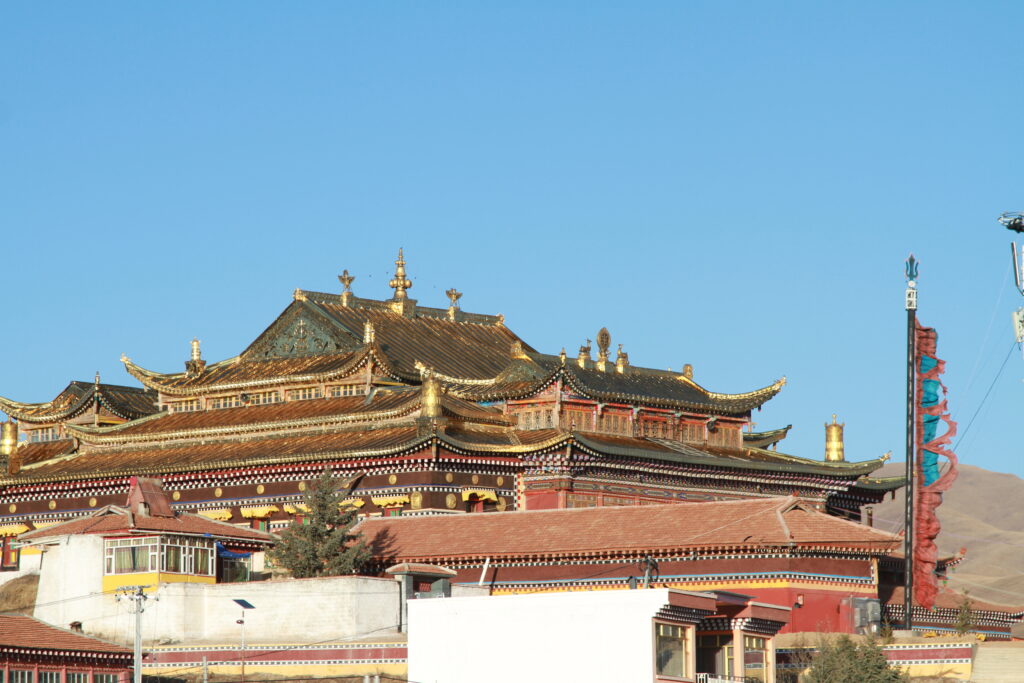
The Nangshig monastery is located in the Amdo Ngawa region of Eastern Tibet. The Nangshig Monastery was founded in 1108 by Yonten Gyaltsen, who is also known as Nangshig Dophag Chenpo. Historically Nangshig became the seat of Nangzhig Kyabgons and the other senior lamas. Since its early history, this monastery has been one of the important monasteries in the Amdo region of Tibet, it is also known as the principal seat of the eighteen Shigchens. This is not only because of its size and the large number of monks, but also because of its establishment as a sacred place where the great teachings and practices of Bon Sutra, Tantra and Dzogchen have been preserved. Like all of the monasteries on the Tibetan plateau, Nangshig Monastery suffered tremendous loss and destruction of its buildings and sacred objects due to the Cultural Revolution. After 1980, the representative of the Nangshig Kyabgon, Jawop Rinpoche, took the main responsibility for restoring and rebuilding the monastery. The exterior of the monastery has also been much developed in recent years. There are two new temples (one bigger and the other smaller) having a hundred pillars and six large residences for the senior lamas of Nangshig. Among the other new buildings, there is a temple for the gyalpo, a protector temple, a fifteen storied Tashi Gomang stupa, a thirteen storied Namgyal stupa, and a three storied Takma stupa. There are also twenty large tob khor and more than three thousand khor treng in the monastery compound, and nearly five hundred chambers to accommodate approximately two thousand monks. In 2001, a new assembly hall and classrooms were built. A new curriculum of monastic courses as well as new regulations of annual examinations were implemented according to the suggestions of Nangshig Kyabgon and Jawop Rinpoche. In this way, the monastery has been transformed into an institution of higher education for the study and practice of Yungdrung Bon. It has become a model for other educational institutions developing today. Each year, over two hundred students arrive from all over Tibet in order to study Sutra, Tantra and Dzogchen of the Yungdrung Bon. The number of students continues to increase each year. Nangshig monastery is a specially Bon monastery in Amdo Tibet which is functioning not only as a monastery, but its a high institution of Bon tradition. It is about a 4 kilometres walk up a shortcut to reach the monastery on a hill to the north of the town. On a hill to the east is another Bon monastery named Togden or Topgyel which has a large stupa nearby.
 Tibet World Travel Tibet Tour, Tibet Trip, Tibet Travel, Tibet Train, Tibet Trekking,
Tibet World Travel Tibet Tour, Tibet Trip, Tibet Travel, Tibet Train, Tibet Trekking,
